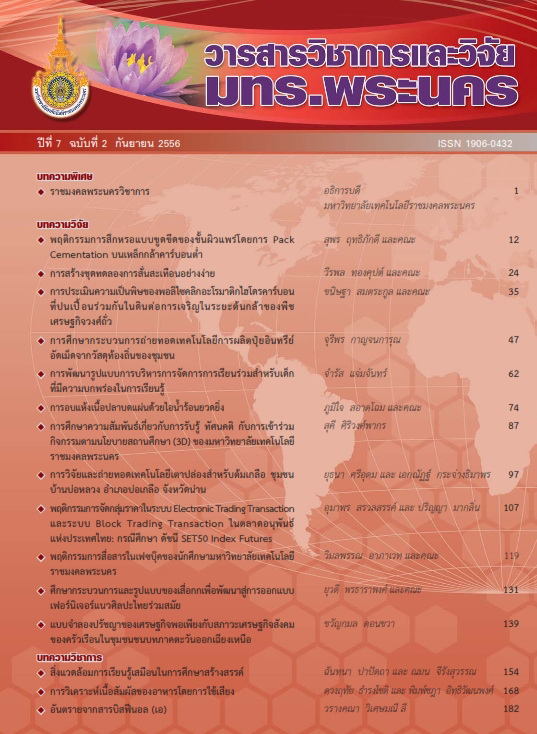การพัฒนารูปแบบการบริหารการจัดการการเรียนร่วมสำหรับเด็กที่มีความบกพร่อง ในการเรียนรู้
Main Article Content
Abstract
บทคัดย่อ
การวิจัยครั้งนี้มีวัตถุประสงค์เพื่อ 1) ศึกษาสภาพการบริหารจัดการเรียนร่วมสำหรับเด็กที่มีความบกพร่องในการเรียนรู้ 2) พัฒนารูปแบบการบริหารจัดการเรียนร่วมสำหรับเด็กที่มีความบกพร่องในการเรียนรู้ กลุ่มตัวอย่าง ได้แก่ ผู้บริหารสถานศึกษา 74 คน ครูผู้สอน 87 คน ศึกษานิเทศก์ 46 คน เก็บรวบรวมข้อมูลด้วยแบบสอบถาม ทำการวิเคราะห์ด้วยค่าสถิติค่าที (t-test) และสถิติเชิงบรรยายค่าเฉลี่ย () และค่าส่วนเบี่ยงเบนมาตรฐาน (S.D.) พบว่า 1) การบริหารจัดการเรียนร่วมสำหรับเด็กที่มีความบกพร่องในการเรียนรู้ภาพรวมของสภาพการปฏิบัติและสภาพความต้องการการพัฒนามีค่าเฉลี่ยอยู่ในระดับมาก หากพิจารณาเป็นรายด้านพบว่า การบริหารงานการเงินและพัสดุมีค่าเฉลี่ยอยู่ในระดับมาก 2) การเปรียบเทียบความแตกต่างเกี่ยวกับสภาพการปฏิบัติกับสภาพความต้องการพัฒนาในภาพรวมของการบริหารจัดการเรียนร่วม สำหรับเด็กที่มีความบกพร่องในการเรียนรู้ในภาพรวมและร้านด้านมีความแตกต่างกันอย่างมีนัยสำคัญทางสถิติที่ระดับ .01 3) รูปแบบการบริหารจัดการเรียนร่วมสำหรับเด็กที่มีความบกร่องในการเรียนรู้มีองค์ประกอบ 7 ด้าน คือ 1) ด้านการบริหารวิชาการ 2) กระบวนการบริหารจัดการ 3) การบริหารจัดการเรียนรู้ 4) โครงสร้างองค์การบุคคล 5) บริหารงานบุคคล 6) บริหารงานทั่วไป 7) การบริหารงานการเงินและพัสดุ
Abstract
The objectives of this research were 1) to study problem of joint learning for children with learning disabilities and 2) to develop a joint learning management model for children with learning disabilities. This study used a sample group of 74 school administrators, 87 teachers and 46 supervisors. Data were collected by questionnaire and analyzed for t-test, mean () and standard deviation (S.D.). Results revealed that, firstly, concerning the joint learning management model for children with learning disabilities, overall operational condition and need for development were in high level. Considered by item, it was found that financial management and procurement were in high level. Secondly, comparison of operational condition and need for development in joint learning management for children with learning disabilities between overall results and itemized results was significantly different at the level of .01. Thirdly, the joint learning management model for children with learning disabilities consisted of 7 areas: 1) academic administration; 2) management process; 3) Knowledge management; 4) organizational structure and personnel; 5) human resource management; 6) general administration; and 7) financial and procurement management.


